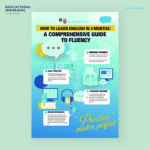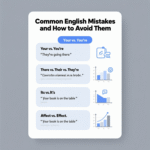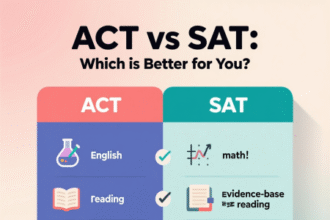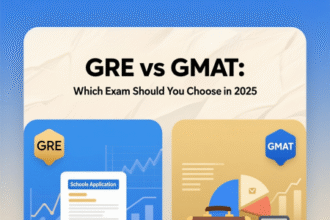The SAT, a cornerstone of college admissions in the United States, demands strategic preparation to achieve high scores. We understand the importance of mastering this standardized test to secure admission to top universities. To help students excel, we provide an exhaustive guide to free SAT practice papers that emulate the real test experience, offering insights, strategies, and resources to boost performance. This comprehensive article delves into the best free SAT practice papers, preparation techniques, and actionable tips to maximize your SAT scores.
- Why Free SAT Practice Papers Are Essential for High Scores
- Where to Find Free SAT Practice Papers
- Official College Board Practice Tests
- Khan Academy’s Free SAT Prep
- Other Reputable Sources for Free SAT Practice Papers
- How to Use Free SAT Practice Papers Effectively
- Step 1: Simulate Test Day Conditions
- Step 2: Analyze Your Performance
- Step 3: Develop a Study Plan
- Step 4: Practice Regularly
- Understanding the Digital SAT Format
- Strategies for Achieving High SAT Scores
- Mastering Time Management
- Enhancing Reading and Writing Skills
- Excelling in Math
- Building Test Endurance
- Top Free SAT Practice Papers for 2025
- College Board Bluebook Practice Tests
- College Board Linear Practice Tests
- Khan Academy Practice Tests
- The Princeton Review Practice Test
- Kaplan’s 20-Minute Workout
- How to Score Your SAT Practice Tests
- Common Mistakes to Avoid When Using Free SAT Practice Papers
- Supplementary Resources for SAT Preparation
- Creating a Study Schedule for SAT Success
- Tips for Test Day Success
- Recommendations and Suggestions
- Frequently Asked Questions (FAQs)
Why Free SAT Practice Papers Are Essential for High Scores
Preparing for the SAT requires familiarity with its structure, question types, and time constraints. Free SAT practice papers are invaluable tools that replicate the actual test environment, enabling students to build confidence and refine their skills. By engaging with these resources, students can identify strengths, address weaknesses, and develop effective test-taking strategies.
Benefits of Using Free SAT Practice Papers
- Realistic Test Simulation: Practice papers mirror the format, difficulty, and timing of the digital SAT, ensuring students are well-prepared for test day.
- Skill Assessment: Regular practice helps pinpoint areas needing improvement, such as math problem-solving or reading comprehension.
- Time Management: Practicing under timed conditions enhances pacing, a critical factor for achieving high SAT scores.
- Confidence Building: Familiarity with question types reduces test anxiety, allowing students to approach the exam with assurance.
- Free Access: Official and reputable free SAT practice papers are available at no cost, making quality preparation accessible to all.
The Shift to Digital SAT: What You Need to Know
In March 2024, the SAT transitioned to a fully digital format, introducing adaptive testing and a streamlined structure. The digital SAT consists of two main sections: Reading and Writing and Math, with a total of 98 questions to be completed in 134 minutes. The adaptive nature adjusts question difficulty based on performance, making practice with digital tools crucial. Free SAT practice papers designed for the digital format are essential to adapt to this new testing environment.
Where to Find Free SAT Practice Papers
Accessing high-quality free SAT practice papers is easier than ever, thanks to reputable sources like the College Board, Khan Academy, and other trusted platforms. Below, we outline the best resources to obtain authentic practice materials.
Official College Board Practice Tests
The College Board, the organization behind the SAT, offers a range of free SAT practice papers through its Bluebook platform and downloadable PDFs. These tests are crafted by the same experts who design the actual exam, ensuring authenticity.
- Bluebook Digital Practice Tests: The Bluebook app provides six full-length digital SAT practice tests that replicate the adaptive testing experience. These tests include real-time scoring and detailed answer explanations, helping students understand their mistakes.
- Linear Nonadaptive Paper Tests: For students with paper-based accommodations, the College Board offers seven printable practice tests (Tests 4–10) that align with the digital SAT format. These are ideal for those unable to access digital platforms regularly.
- Accessing College Board Resources: Visit satsuite.collegeboard.org to download PDFs or use the Bluebook app. Registration for the SAT grants access to additional practice materials.
Khan Academy’s Free SAT Prep
Khan Academy, in partnership with the College Board, provides a robust platform for free SAT practice papers and personalized study plans. Their resources are tailored to the digital SAT and include:
- Full-Length Practice Tests: Aligned with the adaptive format, these tests offer detailed performance analytics.
- Topic-Specific Questions: Practice questions for Reading and Writing and Math sections, with video explanations.
- Personalized Study Plans: AI-driven recommendations based on practice test performance, focusing on weak areas.
To access these resources, create a free account at khanacademy.org and link it to your College Board account for customized practice.
Other Reputable Sources for Free SAT Practice Papers
Beyond official resources, several platforms offer high-quality free SAT practice papers:
- The Princeton Review: Offers a free full-length digital SAT practice test with a score report and strategy sessions. Visit princetonreview.com to register.
- Kaplan Test Prep: Provides a free SAT practice test with a detailed score report and access to instructional videos. Check kaptest.com for details.
- Test Innovators: Features 10 full-length SAT practice tests with over 1,400 targeted questions and instant feedback. Available at testinnovators.com.
- Magoosh: Simulates the digital SAT experience with a free practice test and performance analysis. Visit sat.magoosh.com.
- PrepScholar: Offers sample questions and strategies, with some full-length tests available for free. Explore blog.prepscholar.com for resources.
How to Use Free SAT Practice Papers Effectively
To maximize the benefits of free SAT practice papers, students must approach them strategically. Here’s a detailed guide to using these resources for high SAT scores.
Step 1: Simulate Test Day Conditions
To replicate the SAT experience, take practice tests under realistic conditions:
- Time Yourself: Adhere to the official time limits (64 minutes for Reading and Writing, 70 minutes for Math).
- Minimize Distractions: Choose a quiet environment, turn off devices, and use only permitted materials (e.g., calculator for Math).
- Use Official Tools: For digital SAT practice, use the Bluebook app to familiarize yourself with the interface.
Step 2: Analyze Your Performance
After completing a practice test, review your results thoroughly:
- Score Your Test: Use the provided scoring guides to calculate section and total scores (200–800 per section, 400–1600 total).
- Review Answer Explanations: Understand why answers are correct or incorrect to deepen your grasp of concepts.
- Identify Weak Areas: Focus on sections or question types (e.g., algebra, grammar) where you struggled.
Step 3: Develop a Study Plan
Based on your performance, create a targeted study plan:
- Prioritize Weaknesses: Allocate more time to areas needing improvement, such as Math word problems or Reading passage analysis.
- Use Supplementary Resources: Pair practice tests with study guides, such as the Official SAT Study Guide or Khan Academy’s topic-specific lessons.
- Set Goals: Aim for incremental score improvements (e.g., 50-point increase per practice test).
Step 4: Practice Regularly
Consistency is key to achieving high SAT scores. Incorporate practice tests into your study routine:
- Weekly Practice: Take one full-length test every 1–2 weeks to track progress.
- Daily Drills: Use question banks for targeted practice on specific skills.
- Simulate Test Day: Take at least one practice test in conditions identical to the actual exam, including breaks.
Understanding the Digital SAT Format
To excel on the SAT, students must understand its structure. The digital SAT is adaptive, with two sections:
Reading and Writing Section
- Duration: 64 minutes (two 32-minute modules).
- Questions: 54 questions (27 per module).
- Content: Tests reading comprehension, vocabulary, grammar, and evidence-based analysis.
- Question Types: Multiple-choice questions on passages, grammar rules, and data interpretation.
- Adaptive Feature: The second module’s difficulty adjusts based on performance in the first.
Math Section
- Duration: 70 minutes (two 35-minute modules).
- Questions: 44 questions (22 per module).
- Content: Covers algebra, advanced math, problem-solving, data analysis, and geometry/trigonometry.
- Question Types: Mostly multiple-choice, with some student-produced response (grid-in) questions.
- Calculator Use: Allowed for all Math questions, with a built-in graphing calculator in Bluebook.
Scoring
Each section is scored on a 200–800 scale, with a total score ranging from 400–1600. The adaptive nature means high scores require strong performance in both modules, as harder second modules offer access to higher score ranges.
Strategies for Achieving High SAT Scores
To leverage free SAT practice papers for high scores, adopt these proven strategies:
Mastering Time Management
- Pace Yourself: Allocate roughly 1 minute per Reading and Writing question and 1.5 minutes per Math question.
- Skip and Return: If a question stumps you, mark it and move on to avoid wasting time.
- Practice Timing: Use timed practice tests to build speed and accuracy.
Enhancing Reading and Writing Skills
- Active Reading: Annotate passages to identify main ideas, themes, and evidence.
- Vocabulary Building: Study high-frequency SAT words using flashcards or apps like Quizlet.
- Grammar Mastery: Review rules for punctuation, verb agreement, and sentence structure.
Excelling in Math
- Memorize Formulas: Know key formulas for algebra, geometry, and trigonometry.
- Practice Problem-Solving: Focus on word problems and data interpretation, common on the SAT.
- Use the Calculator Wisely: Leverage the Bluebook’s graphing calculator for complex computations.
Building Test Endurance
The SAT lasts over two hours, requiring mental stamina. Practice full-length tests to build endurance and maintain focus throughout the exam.
Top Free SAT Practice Papers for 2025
Below, we list the top free SAT practice papers available for 2025, ensuring alignment with the digital SAT format.
College Board Bluebook Practice Tests
- Test 1–6: Full-length, adaptive tests available on the Bluebook app, with answer explanations and scoring guides.
- Key Features: Mimics the digital interface, provides performance analytics, and includes all question types.
College Board Linear Practice Tests
- Test 4–10: Downloadable PDFs for students with paper-based accommodations. Available at satsuite.collegeboard.org.
- Key Features: Nonadaptive, but questions reflect the digital SAT content and difficulty.
Khan Academy Practice Tests
- Full-Length Tests: Four adaptive tests, plus hundreds of practice questions.
- Key Features: Personalized study plans, video explanations, and progress tracking.
The Princeton Review Practice Test
- Full-Length Test: Free online test with a score report and strategy sessions.
- Key Features: Simulates digital testing, offers expert tips.
Kaplan’s 20-Minute Workout
- Short Practice Set: 12 exam-style questions with explanations, ideal for quick practice.
- Key Features: Covers all SAT sections, provides performance insights.
How to Score Your SAT Practice Tests
Scoring free SAT practice papers accurately is crucial for tracking progress. Follow these steps:
- Complete the Test: Take the practice test under timed conditions.
- Use Scoring Guides: Refer to the College Board’s scoring instructions for each test.
- Calculate Section Scores: Convert raw scores (number of correct answers) to scaled scores (200–800) using provided tables.
- Analyze Results: Review answer explanations to understand mistakes and improve.
For digital SAT tests on Bluebook, scores are calculated automatically, with detailed breakdowns by section and question type.
Common Mistakes to Avoid When Using Free SAT Practice Papers
To maximize the effectiveness of free SAT practice papers, avoid these pitfalls:
- Ignoring Time Limits: Practicing without timing skews results and doesn’t prepare you for test day pressure.
- Skipping Answer Explanations: Failing to review explanations misses opportunities to learn from mistakes.
- Over-Reliance on Practice Tests: Balance tests with concept review and targeted practice.
- Using Outdated Materials: Ensure practice papers align with the digital SAT format (post-March 2024).
Supplementary Resources for SAT Preparation
In addition to free SAT practice papers, leverage these resources to enhance your preparation:
Books
- Official SAT Study Guide: Comprehensive guide with practice tests and strategies.
- The Princeton Review’s SAT Prep: Detailed content review and practice questions.
- Barron’s SAT: In-depth math and reading strategies with practice tests.
Online Tools
- Khan Academy: Free, personalized SAT prep with video lessons.
- Quizlet: Flashcards for SAT vocabulary and math formulas.
- UWorld: Paid but high-quality question bank with detailed explanations.
Tutoring and Courses
- Free Webinars: Offered by The Princeton Review and Kaplan, covering test-taking strategies.
- Online Courses: Affordable options from Magoosh or Test Innovators for structured prep.
Creating a Study Schedule for SAT Success
A structured study schedule is critical for achieving high SAT scores. Here’s a sample 12-week plan:
Weeks 1–4: Foundation Building
- Goal: Familiarize yourself with the SAT format and content.
- Tasks:
- Take a diagnostic free SAT practice paper to establish a baseline score.
- Review SAT syllabus and question types.
- Study core concepts (e.g., algebra, grammar) using books or online resources.
- Practice 50–100 questions weekly from Khan Academy or College Board.
Weeks 5–8: Skill Development
- Goal: Strengthen weak areas and improve time management.
- Tasks:
- Take one full-length free SAT practice paper every two weeks.
- Analyze results and focus on low-scoring sections.
- Complete daily drills (20–30 questions) targeting specific skills.
- Review vocabulary and math formulas daily.
Weeks 9–12: Test Readiness
- Goal: Simulate test day and refine strategies.
- Tasks:
- Take one full-length free SAT practice paper weekly under test conditions.
- Fine-tune pacing and question-skipping strategies.
- Review all answer explanations to eliminate errors.
- Take a final practice test 1–2 days before the exam to boost confidence.
Tips for Test Day Success
To achieve high SAT scores on test day, follow these tips:
- Prepare in Advance: Gather materials (ID, calculator, pencils) the night before.
- Get Adequate Rest: Aim for 7–8 hours of sleep to stay sharp.
- Eat a Balanced Breakfast: Fuel your brain with protein and complex carbs.
- Arrive Early: Reach the test center with time to spare to reduce stress.
- Stay Calm: Use breathing techniques to manage anxiety during the test.
Recommendations and Suggestions
To maximize your SAT preparation, we recommend:
- Start Early: Begin studying 3–6 months before your test date to allow ample practice time.
- Use Official Resources: Prioritize College Board and Khan Academy materials for authenticity.
- Mix Practice Formats: Combine full-length tests with targeted question practice for comprehensive prep.
- Track Progress: Maintain a log of practice test scores to monitor improvement.
- Seek Support: Join study groups or forums like Reddit’s r/SAT for community tips and motivation.
Frequently Asked Questions (FAQs)
- Where can I find free SAT practice papers?
Official free SAT practice papers are available on the College Board’s Bluebook app and satsuite.collegeboard.org. Additional resources include Khan Academy, The Princeton Review, and Kaplan. - How many practice tests should I take before the SAT?
Aim to take 4–6 full-length free SAT practice papers over 3–6 months, supplemented by daily question practice. - Are digital SAT practice tests different from paper tests?
Yes, digital SAT tests are adaptive, adjusting question difficulty based on performance. Paper tests are nonadaptive and best for students with accommodations. - Can I use old SAT practice tests for the digital SAT?
Older tests (pre-2024) are less relevant due to format changes. Use digital SAT practice tests from the College Board for accurate preparation. - How do I score my SAT practice tests?
Use the scoring guides provided with each test to convert raw scores to scaled scores (200–800 per section). Bluebook tests score automatically. - What is the best way to improve my SAT score?
Combine free SAT practice papers with targeted study, time management practice, and concept review to address weaknesses. - How long should I study for the SAT?
Most students need 3–6 months, studying 10–20 hours per week, depending on their starting score and goal. - Are Khan Academy’s SAT resources free?
Yes, Khan Academy offers free SAT prep, including practice tests, questions, and study plans. - Can I use a calculator on the SAT Math section?
Yes, calculators are allowed for all Math questions, with a built-in graphing calculator in the Bluebook app. - How does the digital SAT’s adaptive testing work?
The second module of each section adjusts in difficulty based on your performance in the first, impacting your score range. - What score is considered a high SAT score?
Scores above 1200 are competitive, with 1400+ considered high SAT scores for top universities. - How often should I take practice tests?
Take one full-length test every 1–2 weeks, supplemented by daily practice questions. - Are answer explanations provided with free SAT practice papers?
Yes, official College Board tests and Khan Academy resources include detailed answer explanations. - Can I reuse practice tests?
Reusing tests is less effective for score improvement. Focus on new tests and questions to build skills. - What if I don’t have access to a computer for digital practice?
Use College Board’s printable linear tests or visit a library/school for computer access.




















